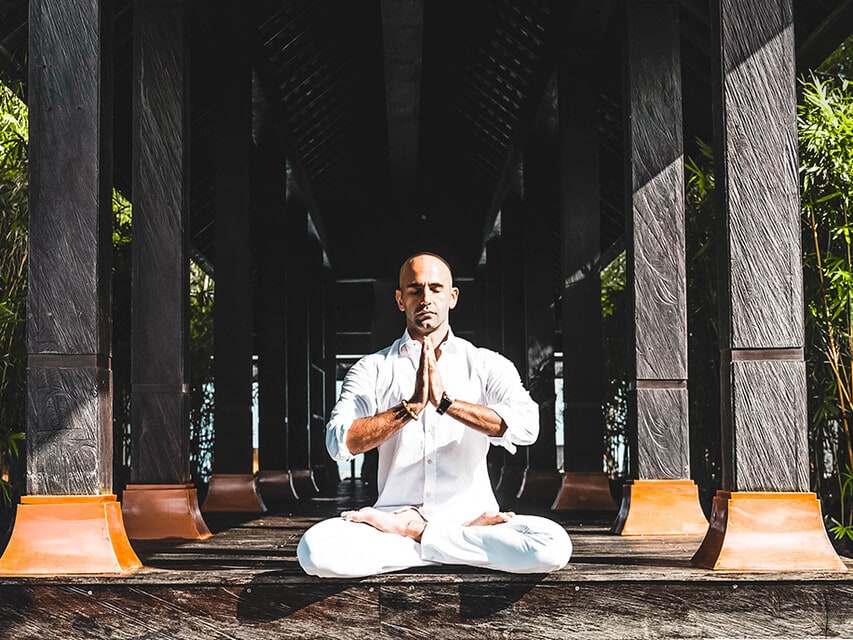Enlightenment Through Vipassana Meditation: Path and Progression

Are you seeking enlightenment? Discover the transformative power of Vipassana meditation on your journey towards inner peace and self-realization.
In this article, we will guide you through the origins, principles, and step-by-step practice of Vipassana. Learn how to overcome challenges and deepen your practice with advanced techniques.
Join us as we explore the ultimate goal of attaining enlightenment through the profound wisdom of Vipassana.
Key Takeaways
- Vipassana meditation originated in ancient India and is now practiced worldwide by people from diverse backgrounds.
- Vipassana meditation cultivates mindfulness, self-awareness, and insight, leading to mental clarity, emotional well-being, and personal growth.
- Mindfulness, loving-kindness, and transcendental meditation are different techniques, and exploring different techniques can help find the most beneficial one.
- Advanced techniques in Vipassana meditation, such as body scanning and noting, deepen awareness and understanding of impermanence, leading to purification, wisdom, and transformative power.
The Origins of Vipassana Meditation
Vipassana meditation originated in ancient India and has been practiced for thousands of years. Its origins can be traced back to the teachings of Gautama Buddha, who lived in the 6th century BCE.
The historical background of Vipassana meditation is deeply rooted in the Buddhist tradition, where it was taught as a method to attain enlightenment and liberation from suffering. The practice was initially passed down orally from teacher to student, and later recorded in sacred texts such as the Pali Canon.
Over time, Vipassana meditation spread across different regions, adapting to various cultures and religions. Today, it continues to be practiced worldwide, attracting people from diverse backgrounds who seek inner peace, self-discovery, and spiritual growth.
The rich historical background of Vipassana meditation adds depth and authenticity to its teachings, making it a valuable tool for personal transformation.
Understanding the Core Principles of Vipassana
In this discussion, you will explore the core principles of Vipassana meditation and gain a deeper understanding of its benefits.
By delving into the principles behind this ancient practice, you will discover how it cultivates mindfulness, self-awareness, and insight.
Additionally, you will uncover the positive impacts Vipassana can have on your mental well-being, emotional balance, and overall quality of life.
Core Principles Explained
To fully understand the core principles of vipassana meditation, you need to embrace the concepts of impermanence and non-attachment. These principles form the foundation of this ancient practice, guiding you towards a deeper understanding of the nature of reality and the self. Vipassana meditation techniques, such as mindfulness of breath and body scan, help you develop a clear and focused mind, enabling you to observe the impermanent nature of thoughts, sensations, and emotions. By cultivating non-attachment, you learn to let go of clinging and aversion, freeing yourself from suffering and experiencing a sense of inner peace. Here’s a table summarizing the core principles of vipassana meditation:
| Core Principles | Description |
|---|---|
| Impermanence | Everything is in a constant state of change. |
| Non-attachment | Letting go of clinging and aversion to experience true freedom. |
| Mindfulness | Developing awareness and presence in the present moment. |
Embracing these principles will deepen your vipassana practice, leading you towards greater insight and enlightenment.
Benefits of Vipassana
Practicing vipassana meditation can lead to a greater sense of inner peace and a deeper understanding of oneself.
- Through vipassana, you can achieve mental clarity. As you focus on your breath and observe your thoughts without judgment, you gain a clearer perspective on your mind’s workings.
- Vipassana also enhances emotional well-being. By developing awareness of your emotions, you become better equipped to manage them. You learn to detach from negative emotions and cultivate positive ones, leading to a greater sense of emotional balance and resilience.
- Vipassana meditation helps you uncover deep-rooted patterns and beliefs, allowing you to explore your innermost self. By developing self-awareness, you can identify and release limiting beliefs, paving the way for personal growth and transformation.
Overall, vipassana meditation offers profound benefits for your mental and emotional well-being, enabling you to live a more fulfilling and authentic life.
Step-by-Step Guide to Practicing Vipassana Meditation
In this discussion, you’ll explore different meditation techniques and gain a deeper understanding of how they can benefit you.
Specifically, the focus will be on explaining various meditation techniques and highlighting the specific benefits of Vipassana meditation.
Different Meditation Techniques Explained
There are various meditation techniques available, each with its own unique benefits and approaches. Here are three different techniques and their benefits explained:
- Mindfulness Meditation: This technique involves focusing your attention on the present moment, observing your thoughts and sensations without judgment. It helps increase self-awareness and reduce stress and anxiety.
- Loving-Kindness Meditation: This practice involves cultivating feelings of love, compassion, and kindness towards yourself and others. It promotes empathy, improves relationships, and enhances overall well-being.
- Transcendental Meditation: This technique uses a mantra, a word or phrase repeated silently, to transcend thought and reach a state of deep relaxation and inner peace. It reduces stress, improves focus, and enhances creativity.
Choosing the right technique for you depends on your personal preferences and goals. Exploring different techniques can help you find the one that resonates with you and brings you the most benefits.
Benefits of Vipassana Meditation
One of the benefits of Vipassana meditation is that it cultivates a deep sense of self-awareness and mindfulness. Through this practice, you can develop an improved focus and reduce anxiety in your life. By directing your attention to the present moment, Vipassana allows you to observe your thoughts and emotions without judgment. This heightened sense of self-awareness enables you to better understand your patterns of thinking and behavior, leading to a greater ability to stay focused on the task at hand. Additionally, Vipassana meditation helps to reduce anxiety by teaching you to observe your thoughts and emotions without getting caught up in them. This practice enables you to develop a sense of equanimity, allowing you to respond to life’s challenges with more clarity and calmness.
| Improved Focus | Reduced Anxiety |
|---|---|
| Cultivates deep self-awareness and mindfulness | Helps to observe thoughts and emotions without judgment |
| Enables better understanding of thinking and behavior | Develops a sense of equanimity |
| Enhances ability to stay focused on tasks | Allows for responding to challenges with clarity and calmness |
Overcoming Challenges on the Path of Vipassana Meditation
Despite its many challenges, the path of Vipassana meditation offers profound growth and transformation. As you embark on this journey, you may encounter distractions and resistance along the way. Here are three strategies to help you overcome these obstacles:
- Cultivate mindfulness: By developing a heightened awareness of the present moment, you can better recognize and let go of distractions. When your mind wanders, gently bring your attention back to the present, focusing on your breath or bodily sensations.
- Embrace discomfort: Resistance can arise when you confront uncomfortable emotions or physical sensations during meditation. Instead of avoiding or suppressing them, allow yourself to fully experience these sensations. By observing them with curiosity and non-judgment, you can gradually dissolve resistance and find inner peace.
- Seek support: When faced with challenges, it can be helpful to connect with a community of fellow meditators or seek guidance from experienced teachers. They can offer encouragement, share insights, and provide guidance to navigate through any difficulties you may encounter.
Deepening Your Practice: Advanced Techniques in Vipassana
Now that you’ve learned how to overcome challenges on your path of Vipassana meditation, it’s time to take your practice to the next level. Deepening your practice involves incorporating advanced techniques that can further enhance your experience and understanding.
These techniques are designed to help you develop a greater level of mindfulness and insight. One advanced technique you can explore is the practice of body scanning. This involves systematically focusing your attention on different parts of your body, observing any sensations that arise without judgment or attachment. This technique can help you cultivate a deeper awareness of the mind-body connection.
Another advanced technique is the practice of noting. This involves labeling mental and physical phenomena as they arise during meditation. By acknowledging and noting each experience, you can develop a more refined understanding of the impermanent and ever-changing nature of reality.
The End Goal: Attaining Enlightenment Through Vipassana
Mastering the advanced techniques of Vipassana can lead you to the ultimate goal of attaining enlightenment. Through your dedicated Vipassana practice, you can embark on a transformative journey that brings you closer to understanding the true nature of reality and yourself. Here are three key aspects to consider on your path to enlightenment:
- Awareness: Vipassana cultivates a deep sense of mindfulness and awareness. By observing your thoughts, emotions, and sensations without judgment, you develop a profound understanding of the impermanence and interconnectedness of all things.
- Purification: Through Vipassana, you purify your mind and body from the accumulated negativities and attachments that hinder your progress. This purification process allows you to experience greater clarity and inner peace.
- Wisdom: As you deepen your Vipassana practice, you gain insight and wisdom into the true nature of existence. You begin to see through illusions and understand the impermanent and unsatisfactory nature of worldly experiences, leading you to a state of profound liberation and enlightenment.
Keep practicing diligently, for attaining enlightenment is within your reach through the transformative power of Vipassana.
Frequently Asked Questions
Can Vipassana Meditation Cure Physical Ailments or Illnesses?
Vipassana meditation can provide physical healing and chronic pain relief. Through focused awareness and deep introspection, you can tap into your body’s innate ability to heal and alleviate ailments.
How Long Does It Typically Take to Attain Enlightenment Through Vipassana Meditation?
Attaining enlightenment through Vipassana meditation varies in time duration. It depends on your dedication, practice, and understanding. Some may experience glimpses quickly, while others may take years. Trust the process and stay committed to your journey.
Are There Any Specific Dietary Restrictions or Guidelines to Follow While Practicing Vipassana Meditation?
There are no specific dietary restrictions or guidelines to follow while practicing Vipassana meditation. However, it is important to maintain a healthy diet that supports your overall well-being and promotes the health benefits of meditation.
Can Vipassana Meditation Be Practiced by People of All Ages and Physical Abilities?
Yes, Vipassana meditation can be practiced by people of all ages and physical abilities. There are modified techniques for those with limited mobility and adaptations for children to make it accessible to everyone.
Are There Any Potential Side Effects or Risks Associated With Practicing Vipassana Meditation?
There are potential risks associated with practicing Vipassana meditation. It’s important to take precautions such as starting slowly, being aware of any physical or mental limitations, and seeking guidance from a qualified teacher.









